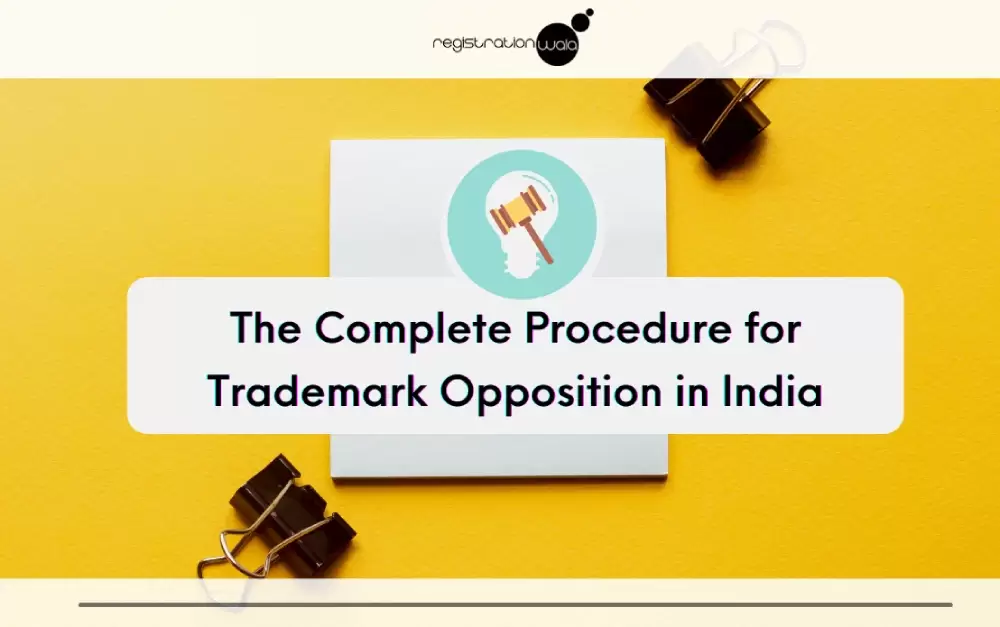The Complete Procedure for Trademark Opposition in India
- February 23, 2022
- Registrationwala

- Home
- /
- Knowledge Base
- /
- IPR Services
- /
- Trademark Objection
- /
- The Complete Procedure for Trademark Opposition in India
The Complete Procedure for Trademark Opposition in India
Let's first understand Opposition
The opposition is a legal proceeding, available in most jurisdictions, in which a party seeks to prevent a pending application for a mark from being granted registration.
Before knowing the procedures of Trademark opposition, let's quickly learn the procedure of filing until registration. After filing an application for registering a Mark, the Registry examines the application to determine the distinctiveness of the Mark. Once the Examiner is satisfied that the mark is distinctive and there are no other similar marks, it will be published in Trade Mark Journal, it is then open for opposition by third parties for the period of 4 months.
In India, Section 21 of The Trade Mark Act, 1991 prescribes that any 1person or Two or more persons can be joined as opponents in the same notice of opposition provided the issues are the same can file notice of opposition against the trademark registration within a period of four months from the date on which the mark is advertised or re-advertised in the Trademark Journal. The Notice of opposition can be filed along with evidence in support of the application.
Common Grounds of Opposition:
A person includes individual, company, partnership firm and Trust.
Procedures:
Once the Notice of Opposition is filed, the Registrar shall within two months from the date of receipt of Notice of opposition, serve a copy of the same pursuant to the filing of the opposition. The Registrar shall serve a copy of the Notice of opposition on the applicant of the opposed Mark.
After receiving the notice of application, within two months, the applicant of the opposed mark shall send to the registrar counter statement in the prescribed manner specifying the grounds along with the evidence on which he relies for his application.
If the applicant fails to file the counter-statement within the stipulated time, then the applicant's mark shall be deemed to have been abandoned his application.
Thereafter, the Registrar shall serve the counter statement on the opponent and the Opponent is required to adduce evidence by way of affidavit in support of the opposition within two months of receipt of the Counter-Statement.
After hearing the parties and considering the evidence, the Registrar shall decide whether the trademark is to be accepted or not. The Decision of the Registrar made in the opposition proceedings can be challenged by an aggrieved person by filing an appeal before the Intellectual Property Appellate Board.
Some Important Points:
The notice of opposition should be filed at the trademark registry where the application for the conflicting mark has been filed.
Generally, a Power of Attorney should be submitted at the time of filing the notice of opposition. If the Power of Attorney is not available at the opposition, its time of filing the can be filed at a later date.
It is possible to file the opposition on the basis of the pending application or use. The Trade Marks Act, 1999 recognizes common law rights
- 4042 views
